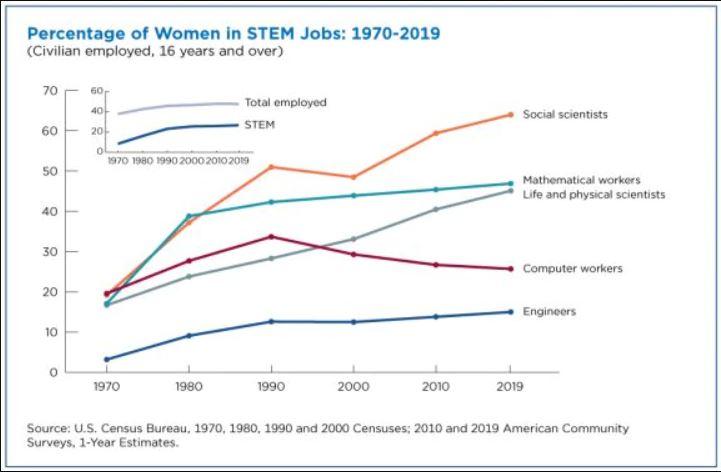Support Systems
In the past 50 years, the number of women in science has changed dramatically. “In 1970, women made up 38% of all U.S. workers and 8% of STEM workers. By 2019, the STEM proportion had increased to 27% and women made up 48% of all workers” (Census Data). Some reasons for this shift have been the increase in parental influence during childhood and having more role models, especially female ones throughout their careers. This has led to easier access to higher education and career opportunities within STEM. While this change has been profound, there is still a long way to go for an equal representation of women in STEM fields. A lot of this representation has to do with access to secondary resources and support.
In the Support Systems section of the Women In STEM exhibit, we explore the experiences of Kirtly Parker Jones, MD; Cynthia Burrows, Ph.D.; Lisa Diamond, Ph.D.; and Amy Sibul, M.S., within their fields in regards to their parental influences and suppport, role models and mentorship, and the importance of community and networking for women in STEM.
On each respective page of the Support Systems section, we share the experiences of various interview subjects while connecting first-person accounts to pertinent, generalized studies portraying the effects of support systems upon the experiences of women in STEM.
Page researched and written by Jacqueline Cockrell, Shaistah Din, Cullen O'Brien, Jack Temme, and edited by Isabel DuBay and Jessica Davis.
Later edited by Pamalatera C. Fenn

